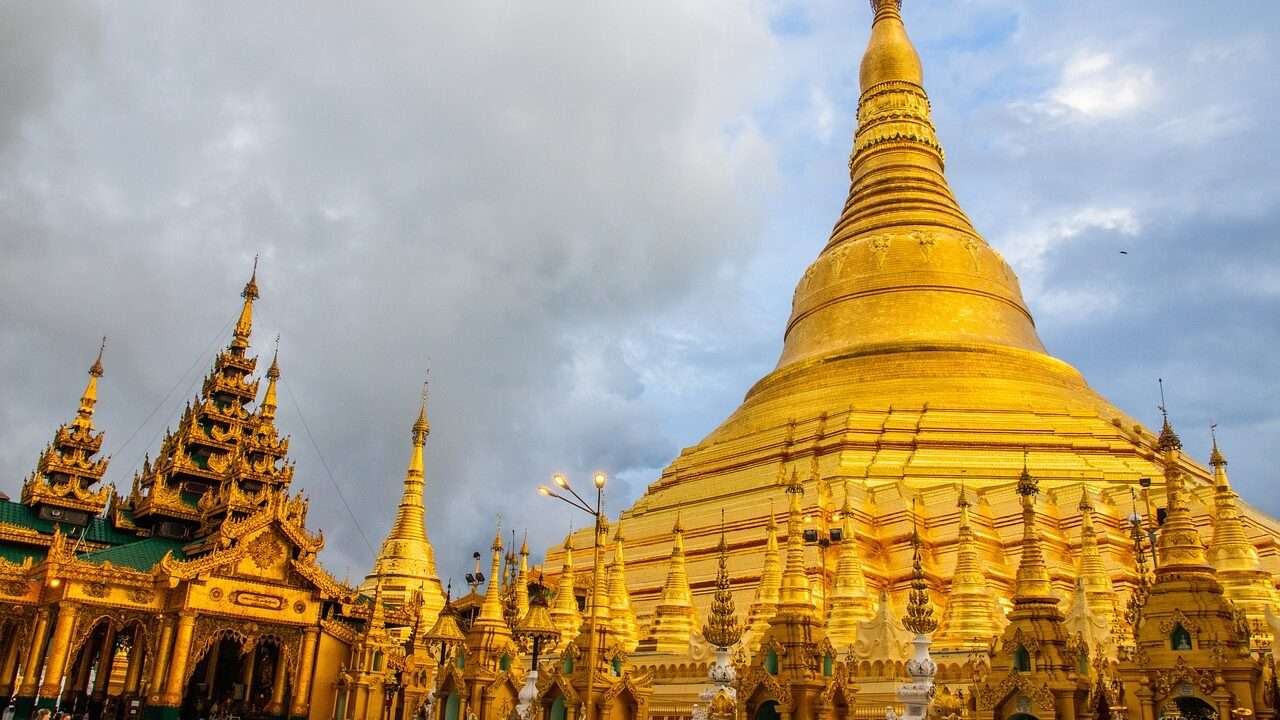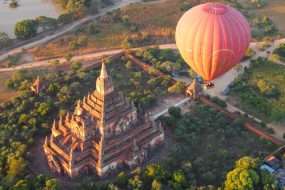
Welcome to the enchanting city of Yangon, also known as “The City of Gold.” With its rich history, vibrant culture, and breathtaking attractions, Yangon is a gem that shines brightly in Southeast Asia. In this article, we will take you on a journey through the golden wonders of Yangon, highlighting its fascinating history, diverse culture, pleasant climate, and the best time to visit. Join us as we unravel the mysteries of this captivating city and explore its hidden treasures.
History: A Glorious Tapestry
The Ancient Origins
Step back in time and immerse yourself in the ancient origins of Yangon. The city's history can be traced back to the 6th century when it was known as Dagon. It served as a small fishing village until it was conquered by the Mon people, who transformed it into a bustling trading hub. Over the centuries, Yangon witnessed the rise and fall of different kingdoms, each leaving its indelible mark on the city's landscape.
The Colonial Era
The next chapter in Yangon's history unfolds during the colonial era. In the 19th century, the British East India Company took control of Yangon and made it the capital of British Burma. The city experienced a rapid transformation under British rule, with grand colonial buildings and infrastructures dotting its streets. This architectural legacy still stands today, adding a touch of colonial charm to Yangon's urban fabric.
The Journey to Independence
The struggle for independence shaped Yangon's history in the 20th century. Influential figures like General Aung San played pivotal roles in leading the nation towards freedom. After years of fighting against colonial rule, Myanmar gained independence in 1948. Yangon became the capital of the newly established republic, cementing its position as a city of great significance.
Culture: Where Traditions Thrive
Delve into the rich tapestry of Yangon's culture, where traditions have been lovingly preserved throughout the ages. The city's diverse population is a testament to its multicultural heritage, with influences from various ethnic groups such as Bamar, Mon, Rakhine, Shan, and more. The predominant religion in Yangon is Buddhism, and it is evident in the city's numerous pagodas and temples. These sacred sites hold deep spiritual significance and are a vibrant reflection of Myanmar's devout Buddhist culture.
Climate: A Tapestry of Seasons
Yangon experiences a tropical monsoon climate, with distinct wet and dry seasons. The months from November to February are considered the best time to visit, as the weather is relatively cooler and drier. During this period, you can explore the city comfortably and engage in various outdoor activities. The wet season, which extends from May to October, brings abundant rainfall, rejuvenating the lush green landscapes. While the humidity may be higher during this time, it also offers a unique charm as the city gleams under rain-washed streets, and the fragrance of wet earth fills the air.
City Attractions: A Glimpse of Splendor
Shwedagon Pagoda
Prepare to be awestruck by the magnificence of the Shwedagon Pagoda. This iconic golden temple is a sight to behold, with its towering spires, intricate carvings, and shimmering gold leaf embellishments. As the most sacred Buddhist site in Myanmar, it attracts pilgrims and visitors from all around the world, offering a tranquil oasis amidst the bustling city.
Sule Pagoda
Located in the heart of Yangon, the Sule Pagoda is a cherished landmark and a symbol of the city's spiritual heritage. This gleaming golden pagoda stands tall amidst modern buildings, serving as a testament to the harmonious blend of tradition and progress. Climb to the top for panoramic views of the cityscape and absorb the serene atmosphere that surrounds this revered site.
Botataung Pagoda
Discover the mystical allure of the Botataung Pagoda, a sacred place with a fascinating legend. The pagoda houses a sacred hair relic of Gautama Buddha and is adorned with intricate decorations that captivate the imagination. Take a leisurely stroll along the nearby river promenade, offering a tranquil escape from the urban bustle.
Mahamuni Pagoda
Immerse yourself in the spiritual ambiance of the Mahamuni Pagoda, home to one of Myanmar's most revered Buddha images. Covered in layers of gold leaf lovingly applied by devotees, this statue radiates a sense of serenity and devotion. Witness the daily rituals and ceremonies that take place within the pagoda, offering a glimpse into the spiritual lives of the local community.
Kandawgyi Lake
Escape to the peaceful oasis of Kandawgyi Lake, a serene body of water located in the heart of Yangon. Surrounded by lush green gardens, this picturesque lake offers a tranquil respite from the urban hustle and bustle. Take a leisurely boat ride, stroll along the scenic boardwalk, or simply relax and enjoy the beauty of nature in this idyllic setting.
How to Reach Yangon: Gateway to Enchantment
Yangon is easily accessible by air, with the Yangon International Airport serving as the main gateway to the city. International flights connect Yangon to major cities around the world, ensuring convenient travel for visitors from afar. For those already in Myanmar, Yangon is well-connected by road and rail networks, allowing for seamless travel from other parts of the country. Buses and trains provide comfortable transportation options, offering an opportunity to enjoy the scenic beauty of Myanmar's countryside.
FAQ
FAQ 1: What is the significance of the Shwedagon Pagoda?
The Shwedagon Pagoda holds great cultural and religious significance in Myanmar. It is believed to enshrine relics of four previous Buddhas, making it a sacred pilgrimage site for Buddhists. The pagoda also serves as a symbol of national pride and is an architectural marvel that showcases Myanmar's rich heritage.
FAQ 2: How old is the Sule Pagoda?
The exact age of the Sule Pagoda is shrouded in mystery, but historical records suggest that it dates back over 2,000 years. It has witnessed the rise and fall of kingdoms, colonial rule, and the country's journey to independence. Today, it stands as a testament to Yangon's enduring cultural heritage.
FAQ 3: What can I expect to see at the Botataung Pagoda?
The Botataung Pagoda is known for its architectural beauty and the relics it houses. As you explore the pagoda, you will encounter intricate carvings, gilded decorations, and a serene prayer hall. The main attraction is the sacred hair relic of Gautama Buddha, which is enshrined within the pagoda.
FAQ 4: Is the Mahamuni Pagoda open to visitors?
Yes, the Mahamuni Pagoda welcomes visitors who wish to explore its spiritual ambiance. You can witness the daily rituals performed by devotees, observe the meticulous gold leaf application on the Buddha statue, and soak in the serene atmosphere that permeates this sacred site.
FAQ 5: Are there any recreational activities at Kandawgyi Lake?
Kandawgyi Lake offers a range of recreational activities for visitors to enjoy. You can take a boat ride on the lake, rent a paddle boat, or simply relax on the lakeside promenade. The surrounding gardens provide a tranquil environment for picnics, jogging, or leisurely walks, allowing you to connect with nature in the heart of the city.
Conclusion:
Embrace the Golden City As we conclude our journey through the wonders of Yangon, we hope you have been inspired to embark on your own adventure to this captivating city of gold. From its ancient origins to its vibrant culture and breathtaking attractions, Yangon offers a tapestry of experiences that will leave an indelible mark on your heart. Whether you find solace in the sacred serenity of the pagodas, immerse yourself in the rich tapestry of Yangon's culture, or simply wander through its streets, the City of Gold beckons you with open arms. So pack your bags, embrace the unknown, and let Yangon's golden charm captivate your senses as you explore the treasures that await in this enchanting city.








